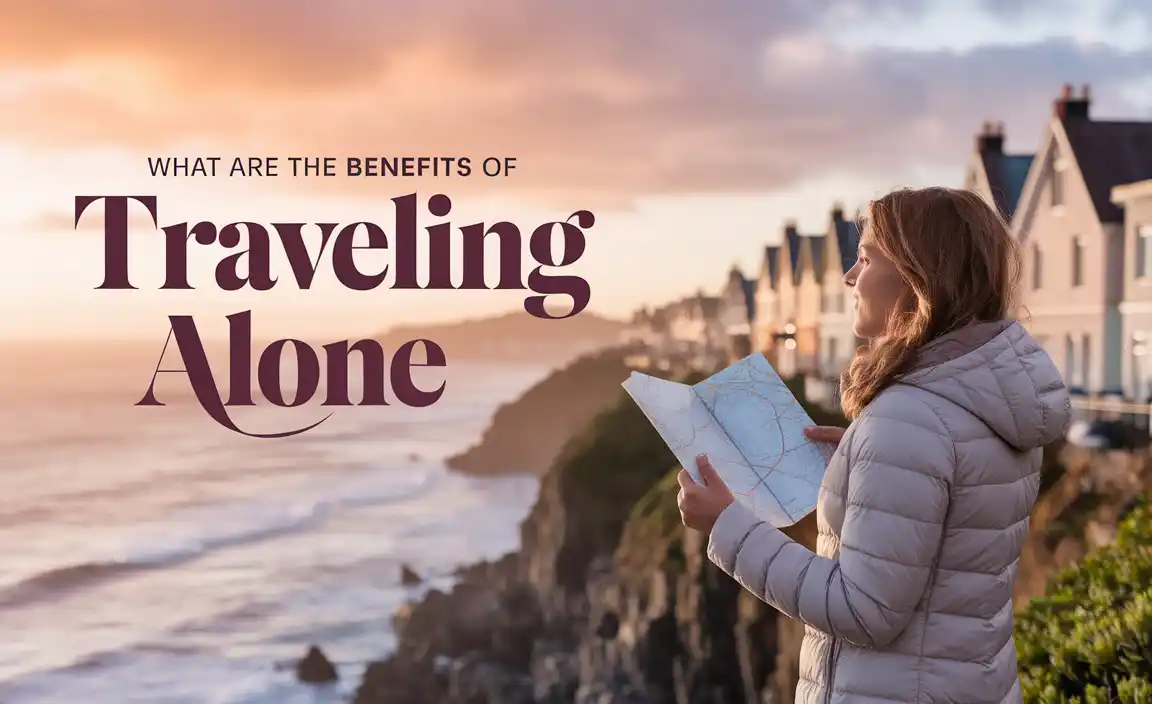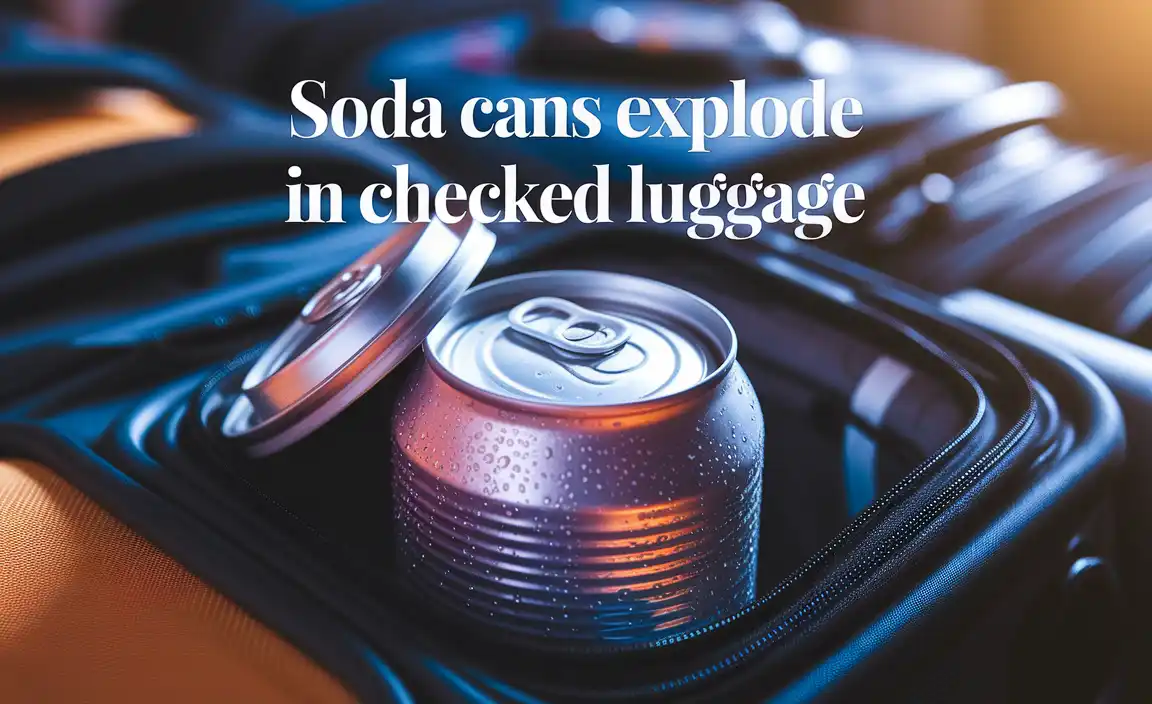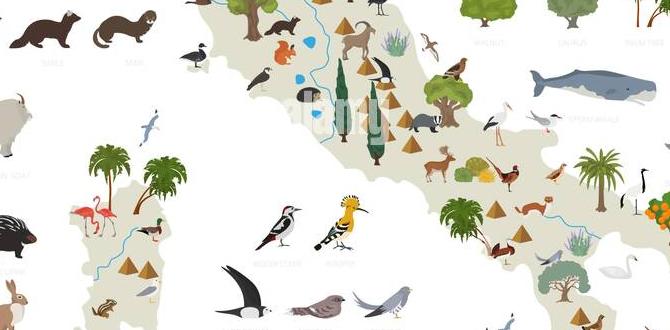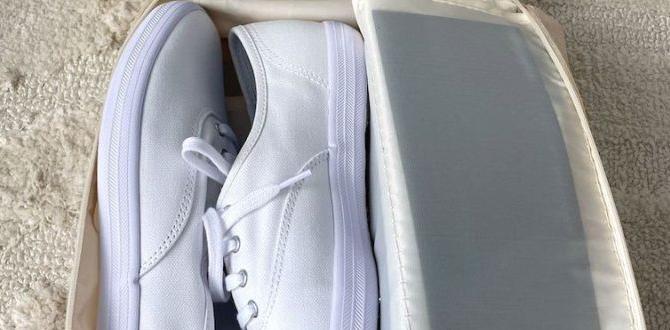Bratislava for first-timers is a charming European capital city known for its historic castle, picturesque Old Town, and lively atmosphere. This guide offers essential tips for a smooth and enjoyable visit.
Welcome to Bratislava, a gem nestled in the heart of Europe! If you’re planning your first trip, you might be wondering where to start. Bratislava is not as overwhelming as some larger capitals, making it a fantastic choice for a relaxed yet enriching getaway. Perhaps you’re worried about navigating a new city, understanding local customs, or simply making the most of your limited time. Don’t worry, we’ve got you covered! This guide is designed to equip you with everything you need for a stress-free and memorable adventure. From getting around to tasting local flavors, we’ll walk you through it all. Get ready to discover the magic of Bratislava!
Getting to Know Bratislava: Your Essential First-Timer’s Toolkit
Bratislava, Slovakia’s capital, welcomes visitors with open arms and a compact, walkable layout. This makes it ideal for first-time visitors who want to soak in the culture without feeling lost. The city offers a delightful blend of history, modern life, and natural beauty. As Michael C. Herrera of Journey Essentials, I aim to simplify your travel planning, ensuring comfort and confidence every step of the way. This guide focuses on practical tips, making your Bratislava experience as seamless as possible, whether you’re traveling solo, with family, or need solutions for comfortable travel with specific needs.
1. Navigating Your Arrival: Getting from the Airport to the City
Your Bratislava adventure begins the moment you step off the plane at Bratislava Airport (BTS), officially known as M. R. Štefánik Airport. While it’s a smaller airport, it serves a good number of European destinations. The key is to know your transport options to get to your accommodation efficiently.
The most common and budget-friendly way to reach the city center from the airport is by public bus. The regular public transport bus line 61 operates frequently. It connects the airport directly to the main train station (Hlavná stanica) and other key points in the city. From the main train station, you can easily transfer to trams or other bus lines to reach your final destination.
How to Catch Bus 61:
- Exit the airport terminal, and you’ll see signs for the bus stop.
- Purchase your ticket before boarding. You can buy tickets from the ticket machines located near the bus stop or inside the airport terminal at the public transport information point. Validate your ticket in the machine on the bus as soon as you board.
- The journey to the main train station takes approximately 20-30 minutes, depending on traffic.
Alternative Options:
- Taxi: Taxis are readily available outside the arrivals hall. It’s advisable to use official airport taxis or book through a trusted app like Hopin to ensure fair pricing. This is a more convenient option, especially if you have a lot of luggage or are traveling with children or individuals who might require extra comfort and convenience, like using discreet adult or child diapers for peace of mind during transit. The taxi ride to the city center typically costs around €20-30 and takes about 15-20 minutes.
- Ride-Sharing Apps: Apps like Uber or Bolt operate in Bratislava and can be a good alternative to traditional taxis. Check their availability and pricing upon arrival.
- Shuttle Services: Some hotels offer their own shuttle services. It’s worth checking with your accommodation in advance to see if this is an option.
For a stress-free start, pre-booking a private transfer can also be a great option, particularly if you prefer a direct door-to-door service without the need to navigate public transport immediately after your flight. Knowing these options helps ensure your first steps into Bratislava are smooth and comfortable.
2. Getting Around Bratislava: Your Guide to Local Transport
Bratislava is wonderfully compact, and much of its charm lies within its easily walkable historic center. However, to explore further afield or simply make getting back to your accommodation easier after a long day of sightseeing, understanding the local transport is key.
The public transport system in Bratislava is run by Dopravný podnik Bratislava (DPB) and is efficient, affordable, and covers the city well. It includes:
- Buses: Extensive network, connecting all parts of the city.
- Trams: Ideal for traversing the city center and reaching surrounding districts.
- Trolleybuses: Similar to buses but electric-powered, offering a quieter ride.
Tickets and Fares:
- You need to buy tickets before you board. Tickets are valid for a specific duration (e.g., 15, 30, 60, or 90 minutes) and allow you to transfer between different lines within that time.
- Tickets can be purchased from yellow ticket machines at most major stops, at newsstands (Tabak Tabak), or via the official DPB mobile app.
- Crucially, you must validate your ticket upon first use by inserting it into the red stamping machine located on board buses, trams, trams, or trolleybuses. Failing to do so will result in a fine.
Pricing Example (as of my last update – always check for the latest fares):
| Ticket Type | Approximate Price (EUR) | Validity |
|---|---|---|
| Short (15-minute) | 0.90 | 15 minutes (one-time journey) |
| Basic (30-minute) | 1.20 | 30 minutes (transfer allowed) |
| Day Ticket (24-hour) | 4.00 | 24 hours from validation |
| 3-Day Ticket (72-hour) | 11.00 | 72 hours from validation |
Key Transport Hubs:
- Hlavná stanica (Main Train Station): A central hub for buses, trams, and intercity travel.
- Most SNP (SNP Bridge): A key tram and bus stop near the city center and the Danube River.
- Kamenné námestie: Another important stop in the heart of the city.
Walking and Cycling:
For the Old Town and areas immediately surrounding it, walking is the best way to explore. You’ll stumble upon hidden courtyards, charming cafes, and unique statues. Cycling is also becoming more popular, with rental services available. This is a fantastic and active way to see the city, especially along the Danube.
Consider your needs: if you’re traveling with young children and might need extra assistance, or if you require discreet personal care solutions like adult diapers or child-safe diapers for longer outings, understanding journey times and having easily accessible transport options can significantly reduce stress. This ensures you can focus on enjoying the sights.
3. Where to Stay: Finding Your Perfect Bratislava Base
Choosing the right neighborhood can significantly impact your experience. Bratislava offers a range of accommodation, from luxury hotels to cozy guesthouses and budget-friendly hostels, catering to every traveler’s needs and budget.
Old Town (Staré Mesto):
- Pros: The heart of the action! You’ll be steps away from major attractions like Bratislava Castle, St. Martin’s Cathedral, and charming main squares. Plenty of restaurants, cafes, and shops are right outside your door. The atmosphere is vibrant, especially in the evenings.
- Cons: Can be noisier due to nightlife and popular tourist spots. Accommodation might be slightly more expensive. Access by car can be restricted in some pedestrian zones.
- Best for: First-time visitors who want to be immersed in the historic atmosphere and have everything at their fingertips.
New Town (Nové Mesto) / Near Main Train Station:
- Pros: Offers a mix of modern hotels and apartments. Excellent transport links, especially if you’re arriving by train or need easy access to the airport (Bus 61 departs from the main station). Often more budget-friendly options are available.
- Cons: Further from the historic core, requiring public transport or a longer walk. Less charming than the Old Town.
- Best for: Travelers who prioritize easy transport connections, business travelers, or those looking for slightly more affordable options.
Petržalka:
- Pros: This is the largest residential district and offers contemporary hotels and apartment rentals, often at lower prices. It’s well-connected by public transport.
- Cons: It’s a modern, somewhat sprawling district and lacks the historic charm of the Old Town. It’s a significant distance from most tourist attractions.
- Best for: Budget-conscious travelers or those who don’t mind commuting to see the sights and are perhaps more interested in experiencing local, non-touristy life.
As Michael from Journey Essentials, I always recommend considering your travel style. If ease and comfort are paramount, especially when managing travel with children or personal needs, choosing accommodation closer to the heart of the city or with excellent transport links is key. If you require specific amenities or need to pack extra supplies such as child diapers or adult incontinence products for peace of mind, ensure your chosen accommodation is comfortable and accessible.
4. Must-See Sights and Activities: Your Bratislava Itinerary Starters
Bratislava might be one of Europe’s smaller capitals, but it packs a punch when it comes to historical sites and picturesque views. Here are some absolute essentials for any first-timer.
Bratislava Castle
Dominating the city skyline, Bratislava Castle offers panoramic views of the city, the Danube River, and even Austria on a clear day. It’s a symbol of Bratislava and has a rich history. You can explore its courtyards, museums, and enjoy the scenic surroundings.
Old Town (Staré Mesto)
Wander through the cobblestone streets and discover charming squares like Hlavné námestie (Main Square) and Hviezdoslavovo námestie. Key sights include:
- St. Martin’s Cathedral: The former coronation church of Hungarian kings.
- Old Town Hall: Climb the tower for a great view over the main square.
- Michael’s Gate: The only preserved gate of the medieval city fortifications, offering historical exhibits and city views from its tower.
- Unique Statues: Keep an eye out for quirky bronze statues like Čumil (Man at Work), Schöner Náci, and the Napoleonic Soldier.
UFO Observation Deck
Located atop the SNP Bridge (Most SNP), the UFO deck offers arguably the most breathtaking modern view of Bratislava. It’s a unique architectural landmark and a fantastic spot for photographs, especially at sunset. There’s a restaurant and bar at the top too.
Devín Castle
A short bus ride or scenic walk along the Danube takes you to the stunning ruins of Devín Castle. Its strategic location at the confluence of the Danube and Morava rivers offers important historical context and dramatic landscapes.
St. Elizabeth’s Church (The Blue Church)
A fairy-tale Art Nouveau church with its distinctive blue facade, this is a beautiful and tranquil spot to visit. It’s a must-see for architecture enthusiasts.
Tips for Sightseeing:
- Wear comfortable shoes! You’ll be doing a lot of walking, especially on cobblestones.
- Consider purchasing a Bratislava Card. It offers free public transport and discounts on many attractions. Check if it aligns with your planned activities to ensure value.
- If you’re traveling with family and need to manage diaper changes or ensure comfort for individuals using adult diapers, plan your stops at cafes or public restrooms strategically. Many museums and larger attractions have facilities available.
5. Embracing Bratislava’s Culinary Scene: What to Eat and Drink
Slovak cuisine is hearty, comforting, and delicious, often featuring influences from its neighboring countries. Exploring the local food is a vital part of any travel experience.
Traditional Slovak Dishes to Try:
- Bryndzové Halušky: Often considered the national dish, this is a hearty bowl of potato dumplings mixed with sheep cheese (bryndza) and topped with bacon bits. It’s rich, creamy, and incredibly satisfying.
- Kapustnica: A traditional sauerkraut soup, often enriched with sausage, smoked meat, and mushrooms. It’s particularly popular during Christmas but available year-round.
- Goulash (Guláš): While also popular in Hungary and the Czech Republic, Slovak goulash typically uses beef and is served with bread or dumplings.
- Sviečková na smotane: Sliced beef in a creamy vegetable sauce, often served with bread dumplings and a dollop of cranberry sauce.
- Pirohy: Dumplings, similar to pierogi, which can be savory (filled with cheese, meat, or cabbage) or sweet (filled with fruit or jam) and are often topped with butter, sugar, or sour cream.
Beverages:
- Slovak Wine: While not as famous as its beer, Slovakia produces good quality wines, especially from the Malokarpatská region. Try a local white (like Rizling vlašský) or red (like Frankovka modrá).
- Slovak Beer: Beer is popular and readily available. Look for local brands like Zlatý Bažant or Sariss.
- Kofola: A unique, herbal cola-like soft drink that’s a popular alternative to Coca-Cola in Central Europe.
- Borovička: A traditional Slovak spirit made from juniper berries, similar to gin. Drink it responsibly!
Where to Eat:
- Traditional Restaurants (Koliba): Look for restaurants with “Koliba” in their name for an authentic experience, often decorated in a rustic style and serving traditional dishes.
- Cafes: Bratislava has a thriving cafe culture. Enjoy a coffee and a pastry (like a Medovník – honey cake) in one of the many charming cafes scattered throughout the Old Town.
- Markets: For fresh produce and local treats, explore local markets if your visit coincides with one.
For families or individuals with specific dietary needs or comfort considerations, sampling local foods is still accessible. If you need to carry snacks or specific items like baby food or specialized adult diapers for convenience during your culinary explorations, ensure you have a comfortable and organized travel bag.
6. Language and Basic Phrases: Connecting with Locals
The official language of Slovakia is Slovak. While many Slovaks, especially in tourist areas and younger generations, speak English, knowing a few basic phrases can enhance your interactions and show respect for the local culture.
Useful Slovak Phrases:
- Dobrý deň (DOH-bree dyen) – Hello (formal)
- Ahoj (AH-hoy) – Hi / Bye (informal)
- Prosím (PROH-seem) – Please / You’re welcome
- Ďakujem (JAH-koo-yem) – Thank you
- Áno (AH-noh) – Yes
- Nie (NYEH) – No
- Prepáčte (PREH-pacht-yeh) – Excuse me / Sorry
- Rozumiete po anglicky? (ROH-zoo-myee-tyeh poh AHN-gleet-skee?) – Do you speak English?
- Neviem (NEH-veem) – I don’t know
- Neviem po slovensky (NEH-veem poh SLO-vyens-kee) – I don’t speak Slovak
- Koľko to stojí? (KOL-koh toh STOH-yee?) – How much does it cost?
- Záchod (ZAH-khohd) – Toilet
Don’t be afraid to try! Even attempting a few words will often be met with appreciation and a friendly smile. And remember, if you need to ask for directions or assistance, having your phone with a translation app is always a handy backup.
7. Money Matters: Currency and Tipping Etiquette
Bratislava, and Slovakia as a whole, uses the Euro (€) as its official currency. This makes it convenient for travelers from other Eurozone countries.
Currency:
- Euro (€): Widely accepted.
- ATMs: Easily found throughout the city, especially in banks and shopping centers. They dispense Euros.
- Credit/Debit Cards: Accepted in most hotels, restaurants, shops, and supermarkets. Visa and Mastercard are the most common. Always have some cash on hand for smaller establishments or markets.
- Exchanging Money: While possible, exchanging money at banks or exchange offices in tourist areas might offer less favorable rates. Using ATMs to withdraw Euros is generally the most efficient method for travelers needing cash.
Tipping Etiquette:
- Tipping is customary but not as high as in some Western countries.
- Restaurants: It’s polite to leave a tip of around 5-10





